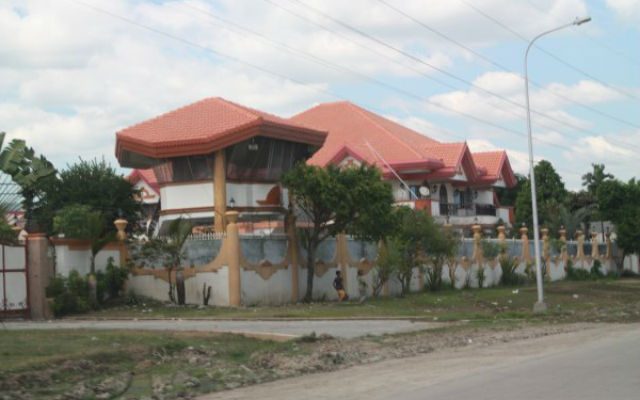SUMMARY
This is AI generated summarization, which may have errors. For context, always refer to the full article.
 A few years back, I traveled that stretch connecting Cotabato and General Santos with 4 companions. We were in a taxi rented by a good Moro feminist friend who teaches at Mindanao State University (MSU) in General Santos.
A few years back, I traveled that stretch connecting Cotabato and General Santos with 4 companions. We were in a taxi rented by a good Moro feminist friend who teaches at Mindanao State University (MSU) in General Santos.
Our plan for that day was to visit a village northwest of Isulan town across the Allah River, where members of the dreaded Ilagas of the ethnoreligious wars of the late 1960s had “retired.” Our driver, an Ilonggo, managed to set up an interview with these aging vigilantes to help my friend and I jumpstart our research on the social history of the Moro National Liberation Front (MNLF) wars.
Our interview finished early. One of the 3 respondents decided at the last minute that his stories about the brutalities of that war, including the ones he committed, must remain a secret. We understood: why talk about the way you shot the heads or slashed the stomachs of Maguindanao men, women, and children?
So half a day lay ahead of us with nothing else to do. Should we just head back to General Santos City and call it a day, or should we do something else? “Would you like to see the mansions of the Ampatuans? Shariff Aguak is just about a 5-minute ride from here,” my friend suggested. We readily said yes, and we continued our drive toward the town that many refer to as “Ampatuan country.”
The ride was uneventful until we reached the police checkpoint just outside Shariff Aguak municipality. There, we were stopped by two “Highway patrol” cops. As we drove to the side to park, about 7 other men – 4 in ragtag militia uniforms and 3 dressed up like civilians – came out of the bunker.
The “head cop” was forthright in explaining why they stopped us: “It’s Ramadan, and to celebrate Ramadan we need P4,000 from you.” My friend who knew her Islam quite well immediately introduced herself an MSU professor. Then, giving him her best “teacherly” look, she nicely reminded “head cop” that Ramadan was not about receiving; it was about giving.
“Zakat, remember?” she smiled.
Sensing that my friend was no ordinary passenger, “head cop” then asked her to get out and follow him to the side of the bunker “so we can discuss this better, Ma’am.” Before they left, he also asked for our driver’s license.
Meanwhile, the rest of the posse surrounded the taxi, displaying for our benefit the various already-cocked guns they were carrying – from the rusty Armalite to what looked to me like a Danao-made paltik pistol. One of these fellows looked down my side of the taxi and said, “MNLF ako!” He was eyeing my bag where I hid my camera. I responded by meekly greeting him “Bapak, wasalamalaikum.” He was impressed.
At this point our driver began fiddling with his cell phone. He whispered to me that he was trying to send a text to his brother who was a policeman in Isulan, telling him where we were. My other friend and I began to worry further. What if the “head cop” would not bargain? What if our driver has successfully contacted his brother and the latter started mobilizing his attack team to come to our rescue?
Before things seemed to spin out of our control, my friend returned with “head cop.” She peered inside and said to me in Cebuano, “Give me P1,500, fast before this idiot changes his mind.” I took up three P500 bills; she took these and handed them to the “head cop.” They said goodbye. “Head cop” said, “Pasensya ka na, ma’am,” then yelled at his buddies, “Ok na!”
But we still wanted to see the mansions, so we dared ask “head cop” to allow us to take a quick peek at the palaces of the “Great Man” before going back to General Santos. He agreed (he liked the idea of his boss being called a “Great Man”), but said he would keep our driver’s license “para sigurado.”
We went through this dilapidated, dusty part of the highway (outside Shariff Aguak’s boundaries; the highway was well paved) and passed through the mansions and their guard towers. These estates stood out as grotesque edifices in a town where the rest of the domiciles were makeshift and dilapidated huts.
This is one of the Ampatuan mansions with the guard tower on the left:

We made a U-turn and went back to the checkpoint. There, we stopped briefly, praised the grandeur of the mansions, and the elated “head cop” let us pass. As our taxi sped away from the Ampatuan’s territory, my friend removed her hijab and sighed: “Ahh…the price of peace.”
Back then I did not know what she meant by the phrase. But the longer I stayed in various places in Moro Mindanao, observing NGOs and aid agencies deal with the realities on the ground, I came to appreciate the relative importance of making compromises just to get projects done – compromises even with the thugs and killers who rule the land.
A month later – on November 23, 2009 – 58 people were gunned down and their bodies hurriedly dumped into a mass grave, courtesy of the mechanical backhoe of the provincial government of Magindanao. The masterminds of one of the most heinous acts of the early 21st century Philippines were Andal Ampatuan Sr, governor of province; Zaldy Ampatuan, governor of the Autonomous Region in Muslim Mindanao; Andal Ampatuan Jr, mayor of Datu Unsay town in Maguindanao province; and their men. (WATCH: Families remember Ampatuan massacre victims)
We were sure that “head cop” and his cronies were part of the killing team. – Rappler.com
Patricio N. Abinales is working on a social history of the Moro National Liberation Front’s separatist war against the Marcos dictatorship.
Add a comment
How does this make you feel?
There are no comments yet. Add your comment to start the conversation.